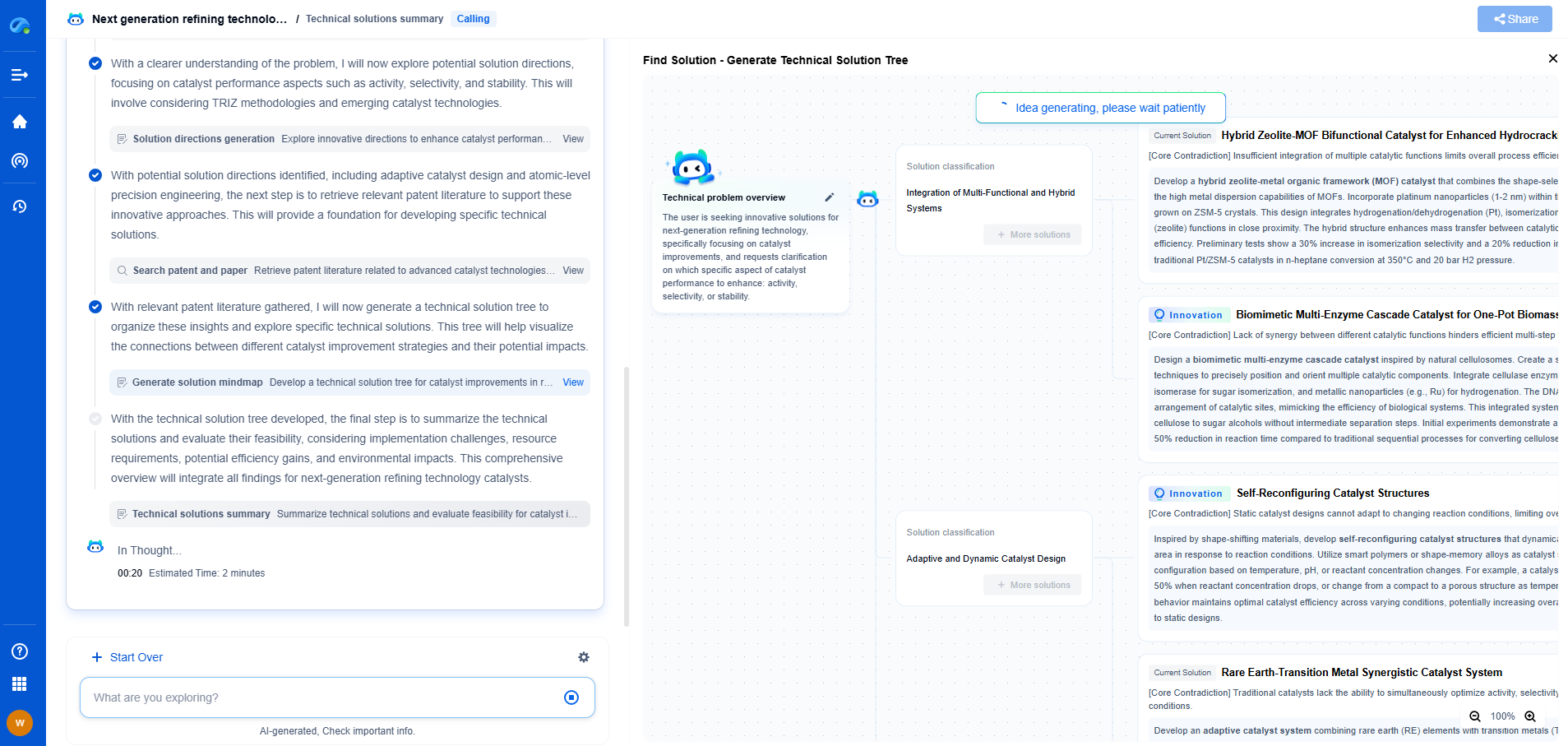What Is Signal Conversion and Why Is It Critical in Measurement Systems?
JUL 17, 2025 |
Signal conversion plays a pivotal role in modern measurement systems. By transforming signals from one form to another, it ensures seamless communication between devices and accurate data interpretation. As measurement systems become more complex, understanding the intricacies of signal conversion becomes crucial.
Understanding Signal Conversion
Signal conversion refers to the process of altering a signal's form to make it compatible with specific systems or applications. In essence, it converts analog signals to digital signals and vice versa. This transformation is vital for the effective operation of various devices that require different signal types to function properly.
Types of Signal Conversion
1. Analog-to-Digital Conversion (ADC)
ADC involves converting continuous analog signals into discrete digital signals. This process is essential for digital devices to interpret real-world data, such as temperature, pressure, or sound. ADCs are used in numerous applications, including audio recording, digital photography, and data acquisition systems.
2. Digital-to-Analog Conversion (DAC)
DAC, on the other hand, converts digital signals back into analog form. This conversion is crucial when digital systems interact with the physical world. Examples include audio playback devices, where digital audio files need to be converted into analog signals to produce sound through speakers.
3. Signal Conditioning
Signal conditioning involves enhancing a signal to make it suitable for further processing. This may include amplification, filtering, or isolating signals. It ensures that the signals are in optimal condition for conversion and subsequent analysis.
The Importance of Signal Conversion in Measurement Systems
1. Accuracy
Accurate signal conversion is essential for precise measurements. Without proper conversion, measurement systems may misinterpret data, leading to errors and unreliable results. By ensuring data integrity, signal conversion contributes to the accuracy and reliability of measurement systems.
2. Integration
Signal conversion facilitates the integration of diverse components within a measurement system. By standardizing signal types, it allows different devices to communicate effectively, ensuring that the system functions as a cohesive unit.
3. Flexibility
The ability to convert signals provides flexibility in designing measurement systems. Engineers can choose the best components for each stage of the process, knowing that signal conversion will bridge any compatibility gaps.
Applications of Signal Conversion
Signal conversion is omnipresent in various industries, highlighting its critical role in measurement systems:
1. Healthcare
In medical diagnostics, signal conversion allows sophisticated imaging and monitoring devices to deliver precise data. For example, electrocardiograms (ECGs) convert analog heart signals into digital data for analysis and diagnosis.
2. Telecommunications
In telecommunications, signal conversion ensures that data is accurately transmitted across different media, such as radio, fiber optics, or copper wires. This conversion is vital for maintaining data integrity over long distances.
3. Industrial Automation
In industrial settings, signal conversion enables seamless integration of sensors, controllers, and actuators. This ensures that automated systems operate efficiently and respond accurately to real-time data.
Challenges in Signal Conversion
While signal conversion is indispensable, it is not without challenges:
1. Noise
Noise can degrade signal quality, complicating the conversion process and affecting the accuracy of the measurement system. Engineers must implement noise reduction techniques to minimize its impact.
2. Resolution
The resolution of a conversion process determines how finely a signal can be measured. Higher resolution is often desirable but may require more complex and costly components.
3. Speed
Conversion speed is crucial, especially in systems that require real-time data processing. Balancing speed with accuracy and resolution can be challenging in high-performance applications.
Conclusion
Signal conversion is a fundamental aspect of measurement systems, facilitating accurate data acquisition and communication between diverse components. By understanding its principles and challenges, engineers can design systems that are both efficient and reliable. As technology continues to advance, the role of signal conversion will only grow in importance, cementing its place as a cornerstone of modern measurement systems.
Whether you’re developing multifunctional DAQ platforms, programmable calibration benches, or integrated sensor measurement suites, the ability to track emerging patents, understand competitor strategies, and uncover untapped technology spaces is critical.
Patsnap Eureka, our intelligent AI assistant built for R&D professionals in high-tech sectors, empowers you with real-time expert-level analysis, technology roadmap exploration, and strategic mapping of core patents—all within a seamless, user-friendly interface.
🧪 Let Eureka be your digital research assistant—streamlining your technical search across disciplines and giving you the clarity to lead confidently. Experience it today.
- R&D
- Intellectual Property
- Life Sciences
- Materials
- Tech Scout
- Unparalleled Data Quality
- Higher Quality Content
- 60% Fewer Hallucinations
Browse by: Latest US Patents, China's latest patents, Technical Efficacy Thesaurus, Application Domain, Technology Topic, Popular Technical Reports.
© 2025 PatSnap. All rights reserved.Legal|Privacy policy|Modern Slavery Act Transparency Statement|Sitemap|About US| Contact US: help@patsnap.com

